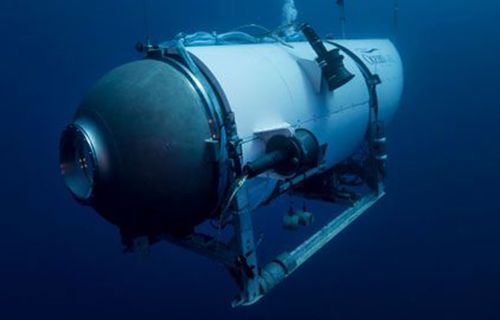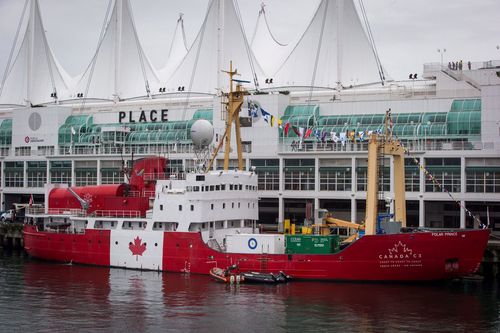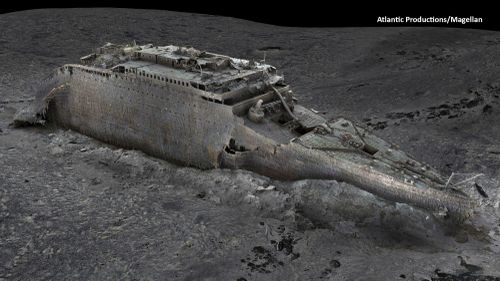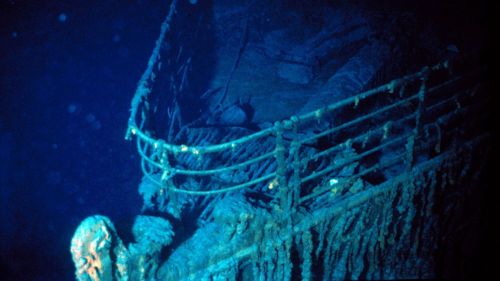Associate Professor Eric Fusil, the director of University of Adelaide’s shipbuilding hub, laid out four frightening scenarios that could have caused a loss of communication between the sub and an expedition vessel called the Polar Prince.
The stakes are incredibly high, given the huge challenge of going so deep in the ocean.

“The clock is ticking,” Fusil said, as US and Canadian desperately scoured the ocean’s surface about 1450km east of Cape Cod and used sonar to listen for sounds far below the water, which is almost 4km deep in the area.
Any submariner knows how unforgiving the abyssal domain is, Fusil said, referring to the depth of water known as the abyssal, or the abyss, ranging from 3000 to 6500 metres.
“Going undersea is as, if not more, challenging than going into space from an engineering perspective,” Fusil said.
The six-metre vessel has four days of emergency capability and is carrying five people, including British billionaire, Hamish Harding.
According to Fusil, four major risks could have caused a loss of communication on Titan.
The Titan runs on batteries and a loss of power would means loss of communications, Fusil said.
It is unclear if power back-ups (Uninterrupted Power Supplies) are on the Titan at this point in time.
This is why, Fusil said, some submersibles have two independent sources of energy (electrical and other such as compressed air or hydraulic) to power safety systems.
An electrical fire originating from a short circuit would cause a fire onboard.
On top of ruining the submarine systems, Fusil said the immediate danger is toxic fumes that would poison the atmosphere and intoxicate the passengers, potentially incapacitating them.
Read Related Also: Tucker Carlson Weighs in on Hunter Biden’s Sweetheart Plea Deal
If passengers have have access to Built-In Breathing Systems, a kind of oxygen mask, that may help avert complete disaster, he said.


Submersibles face increasing pressure the deeper they dive.
At 4000 metres, the equivalent of more than 4000 tonne will be applied on an area of 1 square metre.
Titan has a composite hull with inbuilt sensors that can withstand such pressure, but it requires a very accurate round shape.

Fusil said any out of circularity defect could result in a “near instantaneous implosion”, occurring at a rate of less than 40 milliseconds, at such depths.
Should some system failure cause the Titan to start to sink, systems such as safety leads, if fitted on the submersible, can be dropped to gain instant lightening and raise to the surface, he said.
“It is a long climb though,” he said.
Strong currents can occur undersea, and submersibles stay away from anything that could entangle them and block them.
A wreck, such as the Titanic, can present tricky spots if coming too close, where the Titan could get trapped and struggle to free herself, Fusil explained.

Groundbreaking project gives never-before-seen view of Titanic
Timeline: How the expedition unfolded
- Polar Prince departs St John’s, Newfoundland, with submersible Titan on board
- Polar Prince reaches the submersible launch site
- One hour and 45 minutes later communications with Titan are lost
- Vessel reported overdue at 9.13pm local time (12.13pm Monday AEST)
- Rescue mission is launched involving US and Canadian coast guards
- Rear Admiral John Mauger of the US Coast Guard says the submersible has between 70 and 96 hours of oxygen left
- It’s confirmed the submersible had the full complement of five people on board, including UK billionaire Hamish Harding







